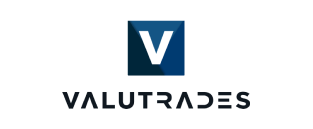In the highly regulated landscape of the UK financial services industry, the Senior Managers and Certification Regime (SM&CR) stands as a pivotal framework. Implemented by the Financial Conduct Authority (FCA), SM&CR is designed to foster accountability and enhance transparency within financial firms. One of the critical aspects of SM&CR is the need for firms to automate various processes to ensure compliance. In this article, we will explore the essential steps to automate SM&CR and discuss the advantages of utilising technology over traditional manual methods.
Understanding SM&CR Compliance
The SM&CR is a comprehensive framework aimed at ensuring that individuals in senior management positions within financial services firms are held accountable for their actions and decisions. It also requires firms to certify individuals in specific roles, ensuring their fitness and propriety on an ongoing basis. To achieve this, firms must:
- Identify Senior Managers: Designate individuals responsible for key functions and roles within the organisation.
- Certification Regime: Certify employees in specific roles, verifying their fitness and propriety annually.
- Conduct Annual Checks: Perform annual checks on all certified individuals.
- Maintain Records: Keep comprehensive records of certifications and checks for audit purposes.
Challenges with Manual Approaches
Historically, financial services firms often relied on manual processes to manage SM&CR compliance. These manual methods come with inherent challenges:
- Resource-Intensive: Manually tracking and verifying certifications and annual checks can be resource-intensive, consuming valuable time and effort.
- Prone to Errors: Manual processes are prone to human errors, which can lead to compliance gaps and regulatory issues.
- Lack of Real-Time Visibility: Traditional approaches often lack real-time visibility into compliance status, making it difficult to address issues promptly.
- Audit Complexity: Retrieving and organising records for regulatory audits can be a complex and time-consuming task.
Advantages of Automation
In recent years, financial services firms have recognised the need to automate SM&CR compliance processes. Here’s how automation can address the challenges:
- Efficiency: Automation streamlines the identification of Senior Managers and the certification process, reducing the administrative burden.
- Accuracy: Automation minimises the risk of errors by ensuring that certifications and checks are carried out consistently and accurately.
- Real-Time Tracking: Automation provides real-time visibility into compliance status, allowing firms to address issues promptly.
- Comprehensive Records: Automated systems maintain comprehensive and easily accessible records, simplifying the audit process.
Choosing the Right Technology Solution
When considering automation for SM&CR compliance, financial services firms should evaluate technology solutions based on several factors:
- Integration: The chosen solution should seamlessly integrate with existing systems and processes to avoid disruptions.
- Scalability: It should be scalable to accommodate the firm’s size and future growth.
- User-Friendly: The platform should be user-friendly, ensuring that staff can navigate it with ease.
- Security: Robust security measures are vital to protect sensitive compliance data.
- Reporting: The solution should provide robust reporting capabilities to track and monitor compliance status.
Conclusion
In conclusion, automating the Senior Managers and Certification Regime (SM&CR) is essential for financial services firms operating in the UK. While traditional manual approaches have their merits, the benefits of leveraging solutions such as My Compliance Centre for automation are clear. Automation not only enhances efficiency and accuracy but also provides real-time visibility and simplifies record-keeping, thereby facilitating compliance with FCA regulations.












